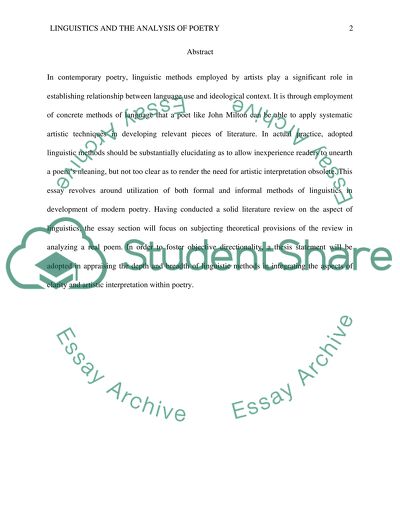Cite this document
(“Linguistics and the Analysis of Poetry Essay Example | Topics and Well Written Essays - 1500 words”, n.d.)
Retrieved from https://studentshare.org/english/1495999-linguistics-and-the-analysis-of-poetry
Retrieved from https://studentshare.org/english/1495999-linguistics-and-the-analysis-of-poetry
(Linguistics and the Analysis of Poetry Essay Example | Topics and Well Written Essays - 1500 Words)
https://studentshare.org/english/1495999-linguistics-and-the-analysis-of-poetry.
https://studentshare.org/english/1495999-linguistics-and-the-analysis-of-poetry.
“Linguistics and the Analysis of Poetry Essay Example | Topics and Well Written Essays - 1500 Words”, n.d. https://studentshare.org/english/1495999-linguistics-and-the-analysis-of-poetry.


